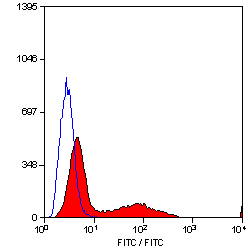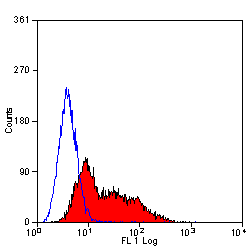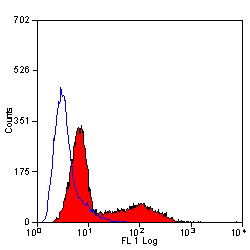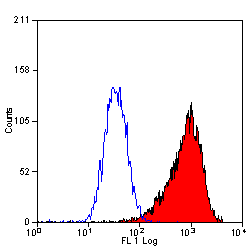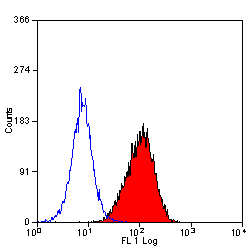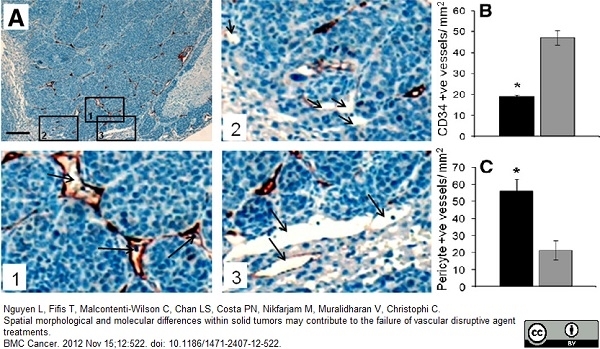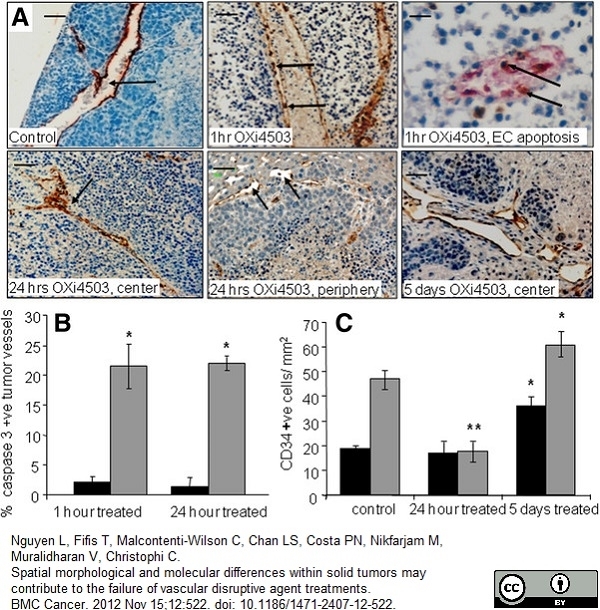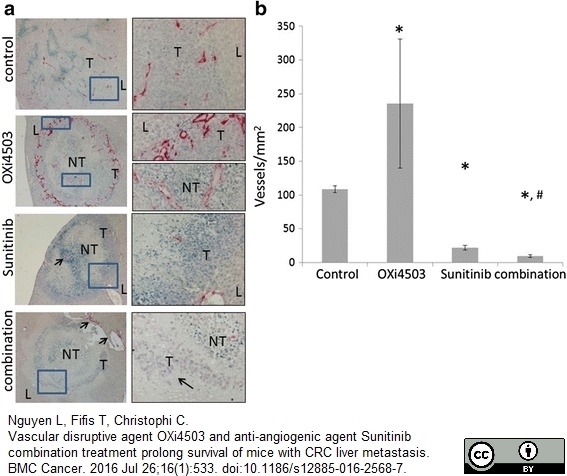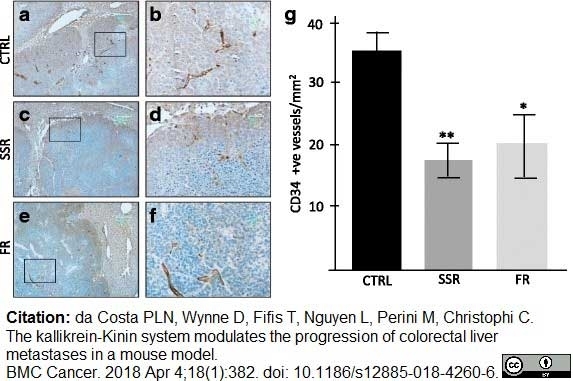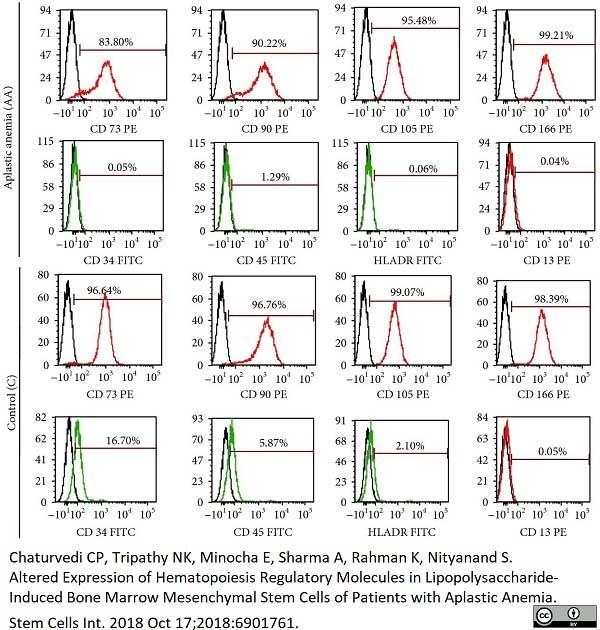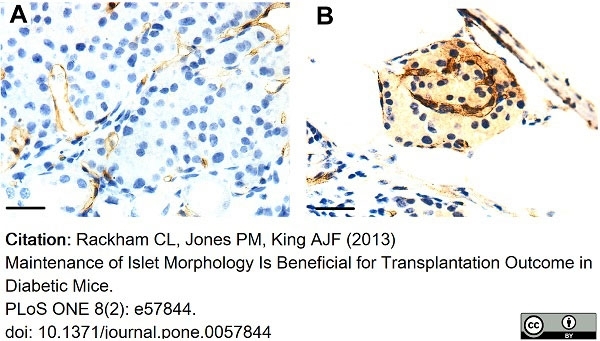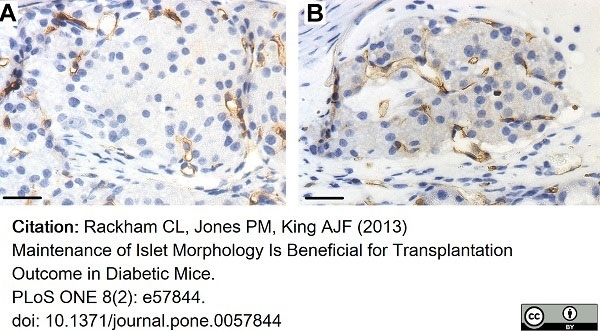CD34 antibody | MEC14.7













Rat anti Mouse CD34:RPE
- Product Type
- Monoclonal Antibody
- Clone
- MEC14.7
- Isotype
- IgG2a
- Specificity
- CD34
| Rat anti Mouse CD34 antibody, clone MEC14.7 recognizes the murine CD34 cell surface antigen, expressed by endothelial cells and by hematopoietic stem cells. Rat anti Mouse CD34 antibody, clone MEC14.7 recognizes a neuraminidase sensitive epitope. As in the human system, CD34 antibodies in the mouse demonstrate slightly different staining patterns depending on their fine specificity. Rat anti Mouse CD34 antibody, clone MEC14.7 appears to recognize a subset of the stem cell population recognized by clone RAM34, and it is thought that this is due to differences in the epitope recognized by the two antibodies. |
- Target Species
- Mouse
- Product Form
- Purified IgG conjugated to R. Phycoerythrin (RPE) - lyophilized
- Reconstitution
- Reconstitute with 1.0 ml distilled water
- Preparation
- Purified IgG prepared by affinity chromatography on Protein G from tissue culture supernatant
- Buffer Solution
- Phosphate buffered saline
- Preservative Stabilisers
- 0.09% sodium azide (NaN3)
1% bovine serum albumin
5% sucrose - Immunogen
- T-end.1, a pMT transformed endothelial cell line.
- Max Ex/Em
-
Fluorophore Excitation Max (nm) Emission Max (nm) RPE 488nm laser 496 578 - Regulatory
- For research purposes only
- Guarantee
- 12 months from date of despatch
DO NOT FREEZE.
This product should be stored undiluted. This product is photosensitive and should be protected from light. Should this product contain a precipitate we recommend microcentrifugation before use.
| Application Name | Verified | Min Dilution | Max Dilution |
|---|---|---|---|
| Flow Cytometry | Neat | 1/5 |
How to Use the Spectraviewer
Watch the Tool Tutorial Video ▸- Start by selecting the application you are interested in, with the option to select an instrument from the drop down menu or create a customized instrument
- Select the fluorophores or fluorescent proteins you want to include in your panel to check compatibility
- Select the lasers and filters you wish to include
- Select combined or multi-laser view to visualize the spectra
| Description | Product Code | Applications | Pack Size | List Price | Your Price | Quantity | |
|---|---|---|---|---|---|---|---|
| Rat IgG2a Negative Control:RPE | MCA1212PE | F | 100 Tests | Log in | |||
| List Price | Your Price | ||||||
| Log in | |||||||
| Description | Rat IgG2a Negative Control:RPE | ||||||
| Description | Product Code | Applications | Pack Size | List Price | Your Price | Quantity | |
|---|---|---|---|---|---|---|---|
| Mouse Seroblock FcR | BUF041A | F | 0.1 mg |
|
Log in | ||
| List Price | Your Price | ||||||
|
|
Log in | ||||||
| Description | Mouse Seroblock FcR | ||||||
| Mouse Seroblock FcR | BUF041B | F | 0.5 mg |
|
Log in | ||
| List Price | Your Price | ||||||
|
|
Log in | ||||||
| Description | Mouse Seroblock FcR | ||||||
Source Reference
-
Garlanda, C. et al. (1997) Characterization of MEC 14.7, a new monoclonal antibody recognizing mouse CD34: a useful reage for identifying and characterizing blood vessels and hematopoietic precursors.
Eur J Cell Biol. 73 (4): 368-77.
References for CD34 antibody
-
Winding, B. et al. (2002) Synthetic matrix metalloproteinase inhibitors inhibit growth of established breast cancer osteolytic lesions and prolong survival in mice.
Clin Cancer Res. 8 (6): 1932-9. -
Nguyen, L. et al. (2012) Spatial morphological and molecular differences within solid tumors may contribute to the failure of vascular disruptive agent treatments.
BMC Cancer. 12: 522. -
Morison, N.B. et al. (2007) The long-term actions of etonogestrel and levonorgestrel on decidualized and non-decidualized endometrium in a mouse model mimic some effects of progestogen-only contraceptives in women.
Reproduction. 133: 309-21. -
Chen, L. et al. (2010) Roles of tetrahydrobiopterin in promoting tumor angiogenesis.
Am J Pathol. 177: 2671-80. -
Ager, E.I. et al. (2010) Targeting the angiotensin II type 2 receptor (AT2R) in colorectal liver metastases.
Cancer Cell Int. 10: 19 -
Chabot, S. et al. (2011) A novel antiangiogenic and vascular normalization therapy targeted against human CD160 receptor.
J Exp Med. 208: 973-86. -
Chen, J. et al. (2011) Circulating endothelial progenitor cells and cellular membrane microparticles in db/db diabetic mouse: possible implications in cerebral ischemic damage.
Am J Physiol Endocrinol Metab. 2011 Jul;301(1):E62-71. -
Chen, J. et al. (2012) Transfusion of CXCR4-primed endothelial progenitor cells reduces cerebral ischemic damage and promotes repair in db/db diabetic mice.
PLoS One. 7 (11): e50105.
View The Latest Product References
-
Ouji, Y. & Yoshikawa, M. (2016) Maintenance of Skin Epithelial Stem Cells by Wnt-3a In Vitro.
Methods Mol Biol. 1516: 279-88. -
Nguyen, L. et al. (2016) Vascular disruptive agent OXi4503 and anti-angiogenic agent Sunitinib combination treatment prolong survival of mice with CRC liver metastasis.
BMC Cancer. 16 (1): 533. -
Vávrová, J. et al. (2012) Irradiated stem cells and ageing of the haematopoietic system.
Radiat Environ Biophys. 51 (2): 205-13. -
DaCosta, P.L.N. et al. (2018) The kallikrein-Kinin system modulates the progression of colorectal liver metastases in a mouse model.
BMC Cancer. 18 (1): 382. -
Danielyan, L. et al.. (2020) Cell motility and migration as determinants of stem cell efficacy
EBioMedicine. 60:102989. -
Rackham, C.L. et al. (2013) Maintenance of islet morphology is beneficial for transplantation outcome in diabetic mice.
PLoS One. 8 (2): e57844. -
Fruchon, S. et al. (2012) Involvement of the Syk-mTOR pathway in follicular lymphoma cell invasion and angiogenesis.
Leukemia. 26 (4): 795-805. -
Zhu, C. et al. (2020) Antinociceptive effect of intrathecal injection of miR-9-5p modified mouse bone marrow mesenchymal stem cells on a mouse model of bone cancer pain.
J Neuroinflammation. 17 (1): 85. -
Ouji, Y. et al. (2022) Impaired differentiation potential of CD34-positive cells derived from mouse hair follicles after long-term culture.
Sci Rep. 12 (1): 11011.
- RRID
- AB_323252
- UniProt
- Q64314
- Entrez Gene
- Cd34
- GO Terms
- GO:0016021 integral to membrane
- GO:0005576 extracellular region
- GO:0005737 cytoplasm
- GO:0009897 external side of plasma membrane
- GO:0043199 sulfate binding
- GO:0050900 leukocyte migration
MCA1825PE
If you cannot find the batch/lot you are looking for please contact our technical support team for assistance.
Please Note: All Products are "FOR RESEARCH PURPOSES ONLY"
View all Anti-Mouse ProductsAlways be the first to know.
When we launch new products and resources to help you achieve more in the lab.
Yes, sign me up